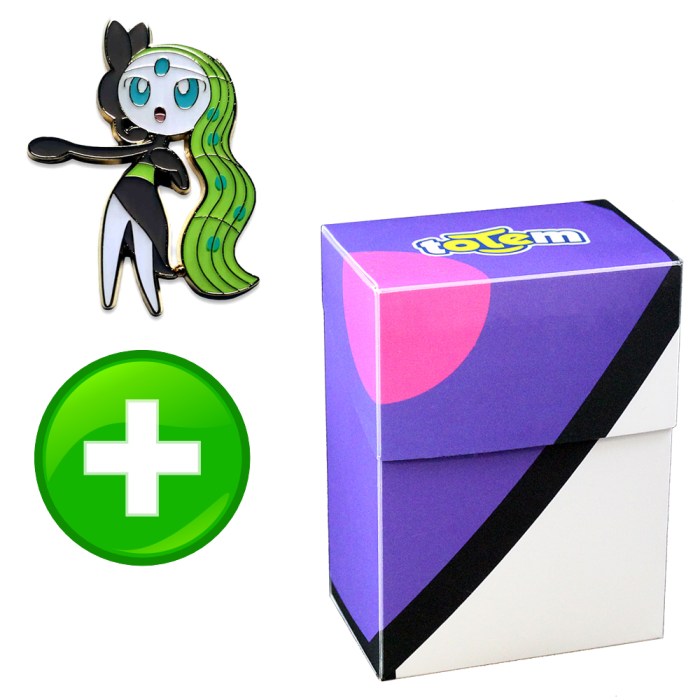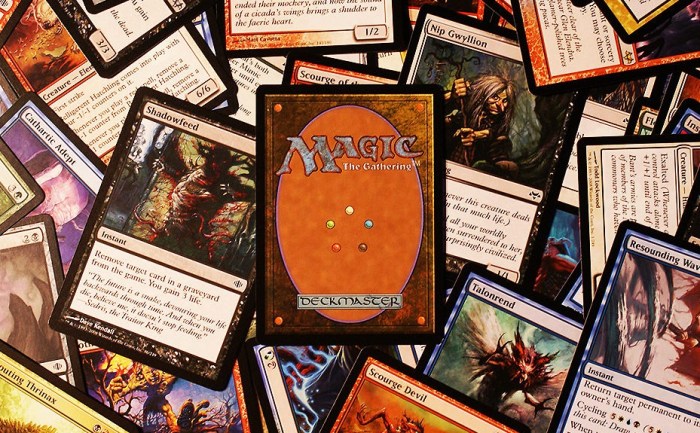
Beginning with Collectible card games (CCG), the narrative unfolds in a compelling and distinctive manner, drawing readers into a story that promises to be both engaging and uniquely memorable.
Originating from simple card games, CCGs have evolved into a dynamic genre that combines strategy, collection, and competition. Players build decks filled with unique cards, each with its own abilities and strengths, to outsmart opponents. With a variety of genres and themes, notable examples like Magic: The Gathering and Pokémon have not only shaped the gaming landscape but also created vibrant communities around them.
Overview of Collectible Card Games (CCG)

Collectible card games (CCGs) have transformed the gaming landscape since their inception, captivating players with their unique blend of strategy, collection, and community. Originating in the early 1990s, CCGs have evolved significantly, influencing the development of new genres and inspiring a dedicated following worldwide.The origins of collectible card games can be traced back to the release of “Magic: The Gathering” in 1993, created by mathematician Richard Garfield.
This groundbreaking game introduced a new paradigm in tabletop gaming, where players could build their decks using cards they collected and traded. Over the years, the CCG genre has expanded to incorporate diverse themes and mechanics, leading to an explosion of titles that cater to various interests and play styles.
Mechanics and Gameplay Elements
The mechanics that define collectible card games are integral to their appeal and complexity. At their core, CCGs revolve around strategic deck-building and resource management, where players use their customized decks to outmaneuver opponents. Key gameplay elements include:
Deck Construction
Players create their decks from a larger pool of cards, allowing for personalized strategies that reflect individual play styles. This aspect fosters creativity and experimentation, as players can combine different cards to create powerful synergies.
Card Types
CCGs typically feature various types of cards, including creatures, spells, and enchantments, each with unique abilities and effects. This diversity adds depth to gameplay and encourages tactical decision-making.
Turn-Based Play
Most CCGs are played in turns, where players take actions such as playing cards, attacking opponents, or using abilities. This structure allows players to respond strategically to each other’s moves, enhancing the competitive nature of the game.
Resource Management
Players often need to manage resources, such as mana or energy, to play cards. This mechanic introduces an element of strategy, as players must decide when to deploy their resources for optimal advantage.The impact of CCGs on gaming culture cannot be understated. They have fostered vibrant communities, where players engage in tournaments, trading, and discussions. Notable examples of popular CCGs include “Yu-Gi-Oh!”, “Pokemon Trading Card Game”, and “Hearthstone”.
Each of these titles has contributed to the proliferation of CCGs, drawing in millions of players and creating a dedicated fan base.
Magic
The Gathering : Widely considered the pioneer of the genre, it has maintained relevance with expansions and updates for decades, solidifying its legacy in both tabletop and digital formats.
Yu-Gi-Oh!
Based on the popular anime and manga series, this game combines strategy with the appeal of its engaging narrative, attracting a younger audience alongside seasoned players.
Hearthstone
As a digital CCG, it has revolutionized the genre with its accessibility and innovative online play, proving that CCGs can thrive in the digital age.In essence, collectible card games have carved a unique niche in the gaming world, blending strategy, collection, and community engagement into a compelling experience that continues to evolve and inspire players worldwide.
Comparison of CCGs with Other Game Types
Collectible card games (CCGs) stand out in the gaming landscape, offering unique mechanics and community engagement. Understanding how they compare to other game types, such as board games, traditional card games, and video games, provides deeper insights into their appeal and strategic depth. Each category has its strengths, and exploring these can help players appreciate the nuances of CCGs.
Differences Between CCGs and Board Games
CCGs and board games both involve strategic thinking and player interaction, yet they differ significantly in structure and gameplay. Board games typically feature a fixed set of rules and components, creating a defined experience each time they are played. In contrast, CCGs allow players to build custom decks from a vast pool of cards, introducing variability and personalization that enhances replayability.Key distinctions include:
- Game Components: Board games often rely on physical boards, pieces, and dice, while CCGs require only cards, which can be combined in countless ways.
- Deck Building: Players in CCGs curate their decks before gameplay, enabling a focus on strategy and individual preferences, whereas board games usually use pre-defined setups.
- Replay Value: The ever-changing combinations and strategies in CCGs lead to high replay value, in contrast to many board games that may feel repetitive after several plays.
Similarities and Distinctions Between CCGs and Traditional Card Games
While both CCGs and traditional card games use a deck of cards as their primary component, their gameplay dynamics and objectives set them apart. Traditional card games often have simpler rules and are generally played with fewer cards and limited customization. CCGs, on the other hand, can be complex, involving intricate rules and multiple strategies based on the cards in hand.The following points highlight their relationship:
- Complexity: CCGs often incorporate advanced mechanics, such as resource management and unique card abilities, unlike most traditional card games which tend to be straightforward.
- Customization: Players can customize their CCG decks extensively, while traditional card games usually have fixed card sets and rules.
- Player Interaction: Both formats encourage interaction, but CCGs, with their diverse strategies and counterplays, often lead to deeper tactical exchanges.
Comparison of CCGs to Video Games in Community and Strategic Play
The community and strategic elements of CCGs echo those found in the realm of video games, yet there are distinct differences in how these communities are formed and how strategies are developed. Both types foster social connections, but CCGs typically rely on in-person interactions, while video games can facilitate online play across global networks.In terms of strategic depth, both formats require critical thinking and tactical planning, but they manifest in different ways:
- Community Engagement: CCGs often host local tournaments and events, fostering a face-to-face community. Video games may also have local tournaments, but online multiplayer capabilities allow a broader community.
- Strategy Development: Strategies in CCGs evolve based on card synergies and player choices, while video games may involve real-time decision-making and adaptability to opponents’ movements.
- Accessibility: CCGs can be more accessible for casual, face-to-face gameplay, while video games may require technical skill and familiarity with gaming hardware.
“The social and strategic elements of CCGs create deeply engaging experiences, bridging the gap between traditional gameplay and modern digital interactions.”
The Role of Strategy in CCGs
In the world of collectible card games (CCGs), strategy plays a pivotal role that can easily make or break a player’s success. The intricate balance of deck building and strategic formulation defines not only the gameplay experience but also the competitive landscape. Strategy is not merely about having strong cards; it involves understanding synergy, anticipating opponents’ moves, and effectively managing resources.
The importance of deck building in CCGs cannot be overstated. A well-constructed deck serves as the foundation of a player’s strategy, determining the pace and flow of the game. Successful players often blend card synergy, mana efficiency, and a clear win condition to create decks that can adapt to various scenarios. Moreover, knowing when to be aggressive and when to play defensively can be the difference between victory and defeat.
Deck Building Strategies
Crafting a competitive deck requires an amalgamation of various strategic elements. Below are key considerations for designing an effective deck:
- Card Synergy: Each card in your deck should complement others, creating powerful combinations that can overwhelm opponents. For example, pairing cards that enhance each other’s abilities can lead to devastating combos.
- Mana Curve: Understanding the mana costs of your cards is essential. A balanced mana curve ensures that players can effectively play cards throughout the game, maintaining pressure and maximizing opportunities.
- Meta Awareness: Being aware of the current competitive meta helps in tailoring your deck. Incorporating tech cards that counter popular strategies can provide a significant advantage.
- Win Conditions: Identify clear win conditions within your deck. Whether it’s through direct damage, overwhelming board presence, or an alternative win condition like milling, having a defined strategy keeps your gameplay focused.
- Playtesting: Regularly playtesting your deck can uncover strengths and weaknesses. Adjustments based on performance against different opponents can enhance competitiveness.
Strategies Employed by Successful Players
Successful players often employ multifaceted strategies that can adapt to various matchups. Understanding these strategies provides insight into what makes a player competitive in CCGs.
- Resource Management: Effective management of resources, such as cards and life points, is crucial. Players who can optimize their resources often find themselves in favorable positions.
- Decisive Plays: Making calculated risks at the right moment can turn the tide of a match. Successful players often make plays that seem bold but are grounded in solid rationale.
- Psychological Warfare: Understanding an opponent’s mentality and anticipating their next move can lead to strategic advantages. This can involve bluffing or using cards that manipulate the opponent’s decision-making process.
- Adaptability: The best players are those who can pivot their strategies based on the evolving state of the game. Flexibility in strategy allows players to respond to different threats and opportunities.
Guide to Designing a Competitive Deck
Creating a competitive deck involves several steps that ensure effectiveness in play. Here’s a concise guide to help players in this process:
1. Identify Your Playstyle
Determine whether you enjoy aggressive, defensive, or control strategies. Your playstyle will influence the choice of cards you include in your deck.
2. Choose a Central Theme or Archetype
Whether it be aggro, midrange, or control, select an archetype that resonates with your playstyle. This will help in narrowing down card choices.
3. Select Key Cards
Choose a core set of cards that define your deck’s strategy. This includes essential creatures, spells, and any combo pieces needed for synergy.
4. Balance Your Deck
Aim for a balanced number of creatures, spells, and lands (or equivalent resources). A typical ratio might be 60% creatures and spells to 40% resources.
5. Fine-tune Your Mana Base
Ensure your deck has the right mix of lands to support your deck’s mana requirements. This prevents being stuck with unplayable hands.
6. Test and Iterate
Play matches with your deck against varied opponents. Make adjustments based on performance and feedback, constantly refining your strategy.Through understanding and implementing these strategic elements, players can elevate their gameplay and enhance their overall experience in collectible card games.
Final Conclusion

In summary, the world of Collectible card games (CCG) is a rich tapestry of strategic depth and community engagement. Whether you’re a seasoned player or new to the scene, there’s always something to discover. The combination of deck-building strategy and the thrill of competition continues to fascinate players around the globe, ensuring that CCGs remain a staple of modern gaming culture.
Key Questions Answered
What are collectible card games (CCG)?
Collectible card games (CCG) are strategy-based games where players build decks from a pool of cards, each with unique abilities, to compete against each other.
How do I start playing a CCG?
To start playing a CCG, choose a game, acquire a starter deck, and familiarize yourself with the rules and mechanics through practice and tutorials.
Can I play CCGs online?
Yes, many CCGs offer digital versions that allow players to compete online or against AI, enhancing accessibility and convenience.
Are CCGs suitable for all ages?
Yes, CCGs are suitable for a wide range of ages, though some games may have themes or complexity more appropriate for older players.
How can I improve my skills in CCGs?
Improving skills in CCGs includes studying strategies, practicing regularly, joining local tournaments or online communities, and analyzing your gameplay.





